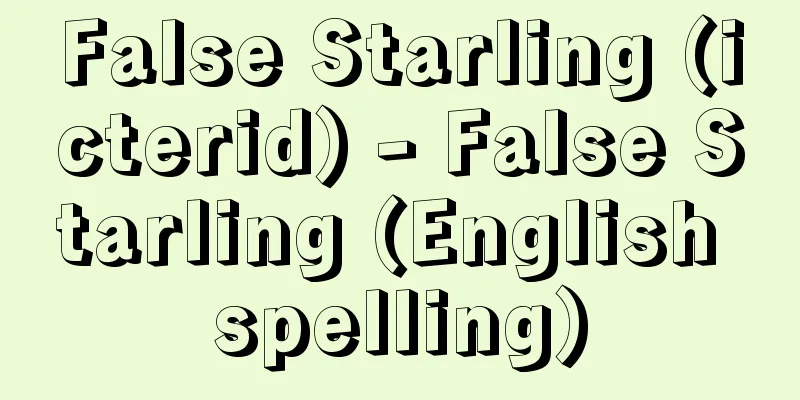Capital - Shihonkin (English spelling) capital

|
It is the amount recorded in the capital account on a company's balance sheet. For a sole proprietorship, the capital account increases when the business owner makes an (additional) investment or when a net profit is recorded in the financial statements, and decreases when the business owner withdraws money or when a net loss is recorded in the financial statements. In contrast, the capital of a joint-stock company is regulated by the Companies Act. Shareholders of a joint-stock company have limited liability and cannot be held liable beyond the amount of their investment. In exchange for shareholders enjoying this benefit, the law gets involved in accounting. The Companies Act stipulates that the amount of assets paid or delivered by shareholders to a corporation at the time of its establishment or issuance of shares shall be regarded as capital. However, an amount not exceeding half of the amount paid or delivered may not be regarded as capital, and the amount not regarded as capital must be recorded as capital reserve (Article 445 of the Companies Act). In the case of a merger, absorption-type division, incorporation-type division, stock swap, or stock transfer, the amount of capital must be the amount stipulated by the Ministry of Justice Ordinance (Article 445 of the Companies Act). The specific details are stipulated in Article 58 and subsequent Articles of the Company Accounting Regulations, but basically the amount decided in the merger contract, etc., should be the capital. When establishing a company, the value of the assets to be contributed or the minimum amount thereof must be stated in the articles of incorporation (Article 27 of the Companies Act), but as there is no minimum limit, it is understood that the establishment of a company with capital of just 1 yen is permitted. After the company is established, it is possible to reduce the amount of capital and increase the amount of capital surplus (Article 446 of the Companies Act) or the amount of capital reserve (Article 447 of the Companies Act) by resolution of the general shareholders' meeting. In such cases, since there is no minimum limit on the amount of capital reduction, it is possible to reduce the capital to zero. In principle, creditor protection procedures are required to reduce capital. [Katsunobu Bandai] [Reference] | | |Source: Shogakukan Encyclopedia Nipponica About Encyclopedia Nipponica Information | Legend |
|
企業の貸借対照表の資本金勘定に計上された金額。個人企業であれば、資本金勘定は営業主が(追加)元入れした場合、決算で純利益を計上した場合に増加し、営業主が引き出した場合、決算で純損失を計上した場合に減少する。これに対して、株式会社の資本金は会社法の規制を受ける。株式会社の株主は有限責任であり、出資額を超えて責任を負うことがない。そのメリットを株主が享受することの代償として、法が会計に関与するのである。 会社法は、設立または株式の発行に際して株主となるものが、当該株式会社に対して払込みまたは給付をした財産の額を資本金とすることを原則としている。ただし、払込みまたは給付にかかる額の2分の1を超えない額は資本金としないことができ、この資本金としないこととした額は資本準備金として計上しなければならない(会社法445条)。 合併、吸収分割、新設分割、株式交換または株式移転に際しては、法務省令に定めた額を資本金としなければならない(会社法445条)。具体的には会社計算規則第58条以下で規定されているが、基本的には合併等の契約で決めた額を資本金とすればよい。 会社の設立に際しては、出資される財産の価額またはその最低額を定款に記載しなければならないが(会社法27条)、下限の定めがないので、資本金1円の会社の設立も認められると解される。 会社設立後には、株主総会の決議によって資本金の額を減少し、その他資本剰余金の額を増加させたり(会社法446条)、資本準備金の額を増加させたりすることができる(会社法447条)。その場合、資本金の減少額について下限の定めがないので、資本金をゼロとすることも可能である。なお、資本金の減少には原則として債権者保護手続が必要である。 [万代勝信] [参照項目] | | |出典 小学館 日本大百科全書(ニッポニカ)日本大百科全書(ニッポニカ)について 情報 | 凡例 |
Recommend
Nidwalden
…the sixth canton in the Swiss Confederation. How...
game-rhymes (English spelling)
… [Harumi Koshiba] [Children's songs from oth...
Einsicht
…From 1913 to 1920, he worked on the research of ...
Keisuke Ito
A pioneer of modern botany in Japan. Born into a ...
Berserker
...At the end of the 16th century, a French hunte...
Scroll saw - Itokoban
...The main points are explained below. [Woodwork...
Empedokles - Empedokles (English spelling)
Ancient Greek philosopher. Born into a noble fami...
Rhein-Main Flughafen (English spelling)
…London also has two other airports: Gatwick Airp...
Quinacridone - Kinakuridon
… [others] Because the performance of azo pigment...
Walking net - Kachishikiami
...There is no direct evidence to prove the exist...
myelin sheath
…Axons are generally long projections (such as th...
Cone biopsy - cone biopsy
...When collecting tissue, a colposcope is used t...
Foreign god - Banshin
〘Noun〙 A god worshipped by aborigines. A god worsh...
Evodia rutaecarpa (Juss.) Hook.et Thoms.
A deciduous shrub or small tree of the Rutaceae fa...
Ivy leaves at Utsunoya Pass - Ivy leaves at Utsunoya Pass
A Kabuki play. A domestic drama. Five acts. Writt...









